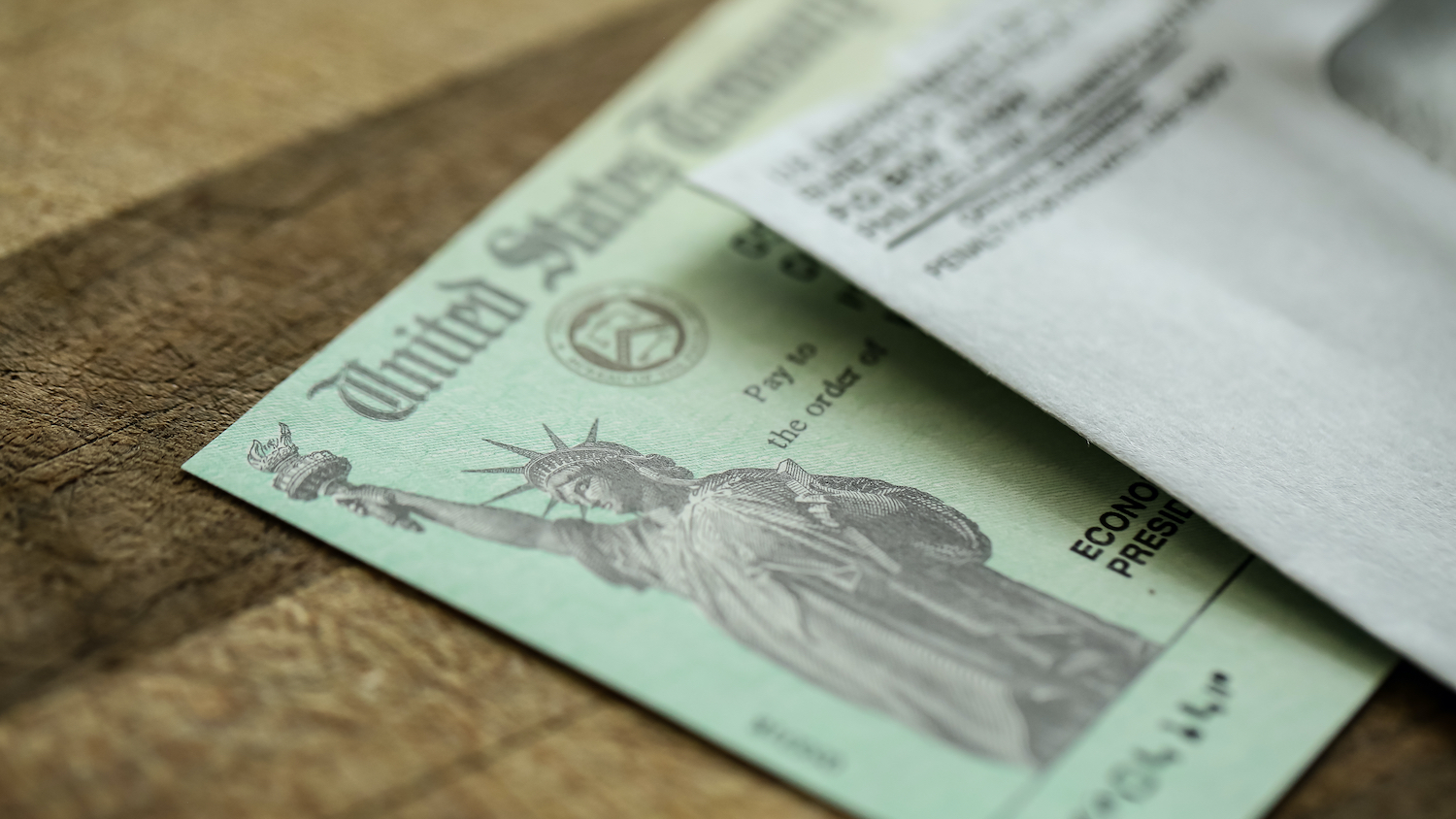By Nathan C. Goldman and Christina M. Lewellen
With President Biden signing the latest COVID-19 stimulus package into law in mid-March of 2021, the topic of direct payments to taxpayers – also known as stimulus payments – are once again at the forefront of many people’s minds.
In a previous Poole Thought Leadership article, assistant professor of accounting Nathan Goldman outlined the guidelines of the first set of stimulus payments. And while these newly proposed stimulus payments have many similarities to those that were distributed in 2020, there are also numerous differences that are important to consider.
How are the new stimulus payments similar to past COVID-19 stimulus payments?
- General Attributes: Like the previous stimulus payments, these funds will be sent to individual taxpayers who make less than a specified amount of money. These payments are a 2021 refundable tax credit paid in advance – meaning that they are really funds that the taxpayer would otherwise receive once they file their tax return. However, given the urgent nature of providing taxpayers in need of cash, Congress intends to authorize these funds to be paid immediately.
- Basis of Income: The determination of whether a taxpayer is eligible to receive the funds will once again be based on adjusted gross income in the tax return from the previous year or the year before that, assuming the taxpayer has yet to file their taxes. Meaning, the taxpayer’s income from 2020 will determine their eligibility. However, if the taxpayer has not yet filed their 2020 income taxes, then the numbers will be based on their 2019 income taxes.
- Taxes on the Stimulus Payment: Given the nature of the payment (i.e., a refundable tax credit), no taxes will need to be paid on the receipt of this payment.
- Speed of Stimulus Payment: For taxpayers who have previously received stimulus payments in 2020 and have their information on file with the IRS, the stimulus payment is likely to be made very quickly – as was shown in the $600 stimulus payments distributed at the end of 2020.
What are the key differences of the new stimulus payment from the previous stimulus payments?
- Payment amount: Congress has increased the amount of the stimulus payment to $1,400 per taxpayer, as part of President Biden’s promise for a total of $2,000 for the combined two payments.
- More Restrictive Groups: The stimulus payments will now be made to those who earn less than $75,000 if they file as single or $150,000 if they file as married. This is a restriction designed to more closely target those who are most in need.
- ‘Quicker’ Phaseout: Similar to the prior stimulus payments, once you reach the ‘income limit’, you will receive less and less of the stimulus payment until you receive none. This phaseout will accelerate much quicker than prior stimulus payments due to lower overall limits of $80,000 for single taxpayers and $160,000 for those taxpayers who file their tax returns jointly.
- Greater Stimulus Payments for Dependents: Previously, only children less than 16 years old were deemed “qualified” as dependents, and the amount received was $500 per dependent. Similarly, older adult dependents were not eligible to receive funds from the prior stimulus packages. Now, the taxpayers can receive a stimulus payment for every dependent claimed on their tax return, and the amount has increased to $1,400 per dependent.
Any other important implications of the proposed stimulus payments?
- A more targeted approach: During this round, fewer people earning higher wages will be eligible to receive stimulus payments. Part of this is due to the nature of the stimulus package being less about emergency and more about general support to taxpayers. This more targeted approach is still within the context of getting money to those who need it most. However, as the pandemic starts to slow down and the country begins to go back to a normal state, the U.S. Congress has the benefit of being able to be more specific as to who receives these funds.
- All dependents, including college students and adult dependents, are now eligible for stimulus payments. Under the prior stimulus packages, those who were 16 and over who are not supporting themselves were essentially excluded from receiving funds because (1) they are still dependents of the taxpayers, and (2) they are not considered qualifying children of their parents. This group typically included college students and relatives who are living with their family. In this new stimulus package, any dependent is eligible for a stimulus payment, so the second part of the restriction no longer applies. Importantly, if the adult is claimed as a dependent on the parent or family member’s return, the parent/family member will receive the stimulus payment for the dependent. However, a college student may receive their own stimulus payment if they file their own tax return and their parents do not claim them as a dependent in 2020. However, this choice can only be made if the student is, in fact, not a dependent of their parents based on IRS definitions.
- Tax planning your stimulus payment: The stimulus payment limits are based on one year of a three-year window. Officially, the stimulus payments are based on the taxpayer’s 2020 adjusted gross income. However, if the taxpayer has yet to file their 2020 income taxes, then the payment will be based on adjusted gross income 2019 income taxes. Furthermore, if the taxpayer does not qualify for the stimulus payments due to making too much money in 2019 or 2020, but the taxpayer does qualify for the stimulus payment based on 2021 income, then the taxpayer can claim the stimulus payment as a credit on the 2021 income taxes when they are filed next year.
This means that there are several opportunities for the taxpayer to qualify for this money. For example, if the taxpayer will receive the stimulus payment based on 2019 adjusted gross income, but not for 2020 adjusted gross income, then the taxpayer should delay filing their 2020 income taxes as long as possible, and they will not have to worry about repaying the stimulus payment since they qualified based on their 2019 income. Conversely, if the taxpayer qualifies based on 2020 income but not based on 2019, then the taxpayer should file their 2020 income taxes as soon as possible. Lastly, if the taxpayer does not qualify based on 2019 or 2020 income, and will be borderline based on 2021 adjusted gross income, then the taxpayer may want to consider delaying income from 2021 into 2022 if at all possible.
How should taxpayers claim the stimulus payment in 2020?
Most people who are eligible for the stimulus payment will receive their money automatically via direct deposit or check. There are some circumstances, however, where taxpayers may qualify for the stimulus payment, but they will not receive it automatically. If the taxpayer has not yet filed their 2020 tax return and the information from their 2019 tax return was incorrect, they will have to file their 2020 tax return to receive credit for the stimulus payment. Similarly, if the taxpayer did not qualify for the stimulus payment based on their 2019 tax return, the taxpayer will not receive the immediate payment of his or her stimulus funds.
What some taxpayers may not have realized is if they did not qualify to receive the funds in March and December of 2020 based on their 2019 income, but they did later qualify to receive the funds based on their 2020 income, then the taxpayer can receive credit for the stimulus payment when their 2020 tax return is filed. On the 2020 return, these funds will appear as a credit that offsets tax liability. If the credit reduces the tax burden below zero, the taxpayer will receive a refund of the excess.
For example, if you are a single taxpayer who later qualified for the stimulus payment and your tax total liability was $10,000 for 2020, but you had $10,000 in tax payments during 2020, your tax due or refund would have been $0. With the stimulus payment, you will receive a tax refund of $1,400. However, if you paid $9,000 in tax payments during the year and therefore would have owed $1,000 when filing their tax return, you will instead receive a refund of $400 ($1,000 offsets the tax owed, and the remainder is refunded). In cases such as these where the taxpayer can receive a tax refund, we would recommend filing the tax return as soon as possible to get the refund or tax offset.
What are the long-run effects of these stimulus payments?
It is important to remember that this is not “free money.” The U.S. national debt is over $28 trillion, which equates to more than $84,000 per U.S. citizen. A new stimulus package of nearly $2 trillion will grow that number. At some point, these funds will have to be paid back, and it will occur in the form of cutting government spending and raising taxes. While many taxpayers will not be directly affected by these measures in the future, everybody will feel the effects in some way, shape or form. It is unlikely that the U.S. will ever have $0 debt. However, there will likely be measures in the near future to bring the national debt to below the size of the gross domestic product (currently $21.5 trillion), if not further, and those measures will undoubtedly have unintended consequences such as higher taxes and employment loss.
- Categories:
- Series:



